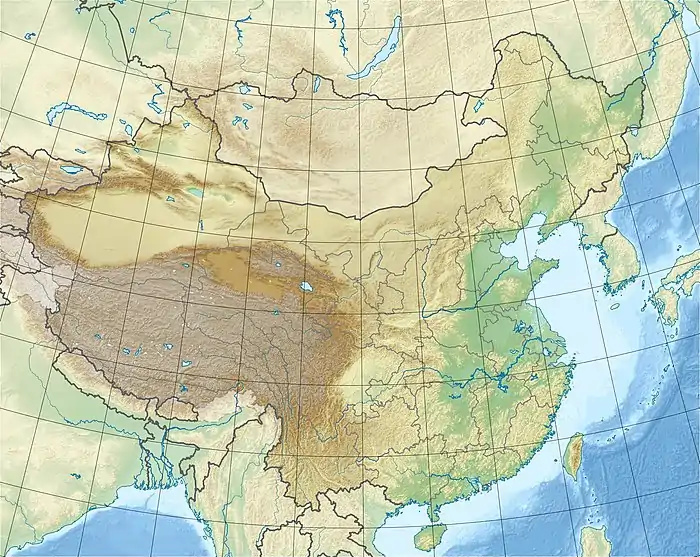Daye Formation
The Daye Formation is a geologic formation in South China, dating from the Induan up to the early Olenekian (early Triassic).[1][2] It is of interest as it spans the period immediately after the Permian-Triassic extinction event, the most severe mass extinction known in Earth history.
| Daye Formation | |
|---|---|
| Stratigraphic range: Induan - early Olenekian, | |
| Type | Geological formation |
| Thickness | ~10 meters |
| Lithology | |
| Primary | Shale, limestone |
| Location | |
| Region | south China |
| Country | |
 Daye Formation (China) | |
The Daye Formation hosts the Guiyang biota, as of 2023 the earliest known Mesozoic lagerstätte.[3]
References
- Gao,M., Mei, M. (November 2012). "Giant Induan oolite: A case study from the Lower Triassic Daye Formation in the western Hubei Province, South China". Geoscience Frontiers. 3 (6): 843–851. Bibcode:2012GeoFr...3..843M. doi:10.1016/j.gsf.2011.11.017.
{{cite journal}}: CS1 maint: multiple names: authors list (link) - Yang, T., Wu, H. (December 16, 2011). "Milankovitch and sub-Milankovitch cycles of the early Triassic Daye Formation, South China and their geochronological and paleoclimatic implications". Gondwana Research. 22 (2): 748–759. doi:10.1016/j.gr.2011.12.003. Retrieved 14 March 2023.
{{cite journal}}: CS1 maint: multiple names: authors list (link) - Dai, X.; Davies, J. H. F. L.; Yuan, Z.; Brayard, A.; Ovtcharova, M.; Xu, G.; Liu, X.; Smith, C. P. A.; Schweitzer, C. E.; Li, M.; Perrot, M. G.; Jiang, S.; Miao, L.; Cao, Y.; Yan, J.; Bai, R.; Wang, F.; Guo, W.; Song, H.; Tian, L.; Dal Corso, J.; Liu, Y.; Chu, D.; Song, H. (2023). "A Mesozoic fossil lagerstätte from 250.8 million years ago shows a modern-type marine ecosystem". Science. 379 (6632): 567–572. Bibcode:2023Sci...379..567D. doi:10.1126/science.adf1622. PMID 36758082. S2CID 256697946.
This article is issued from Wikipedia. The text is licensed under Creative Commons - Attribution - Sharealike. Additional terms may apply for the media files.